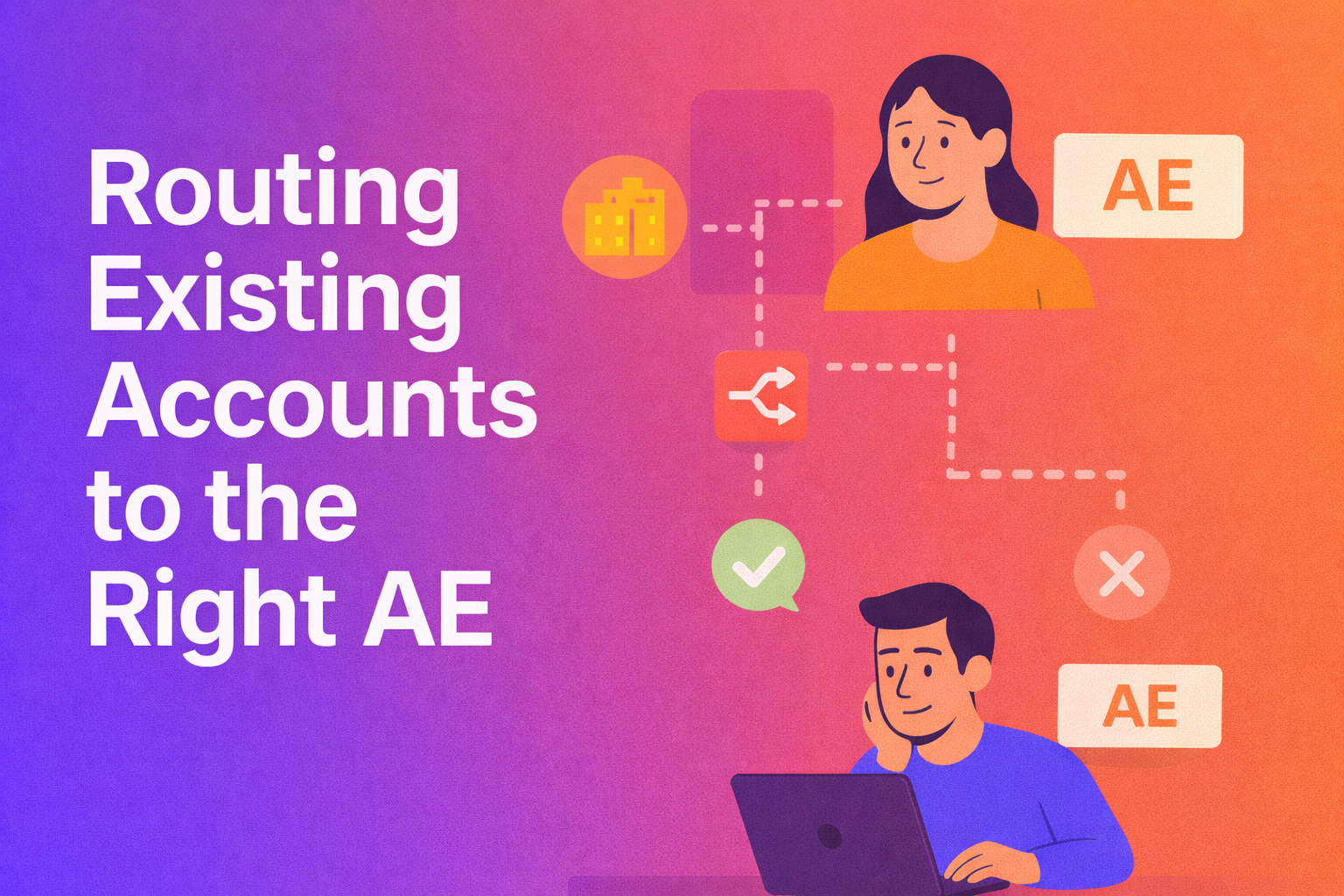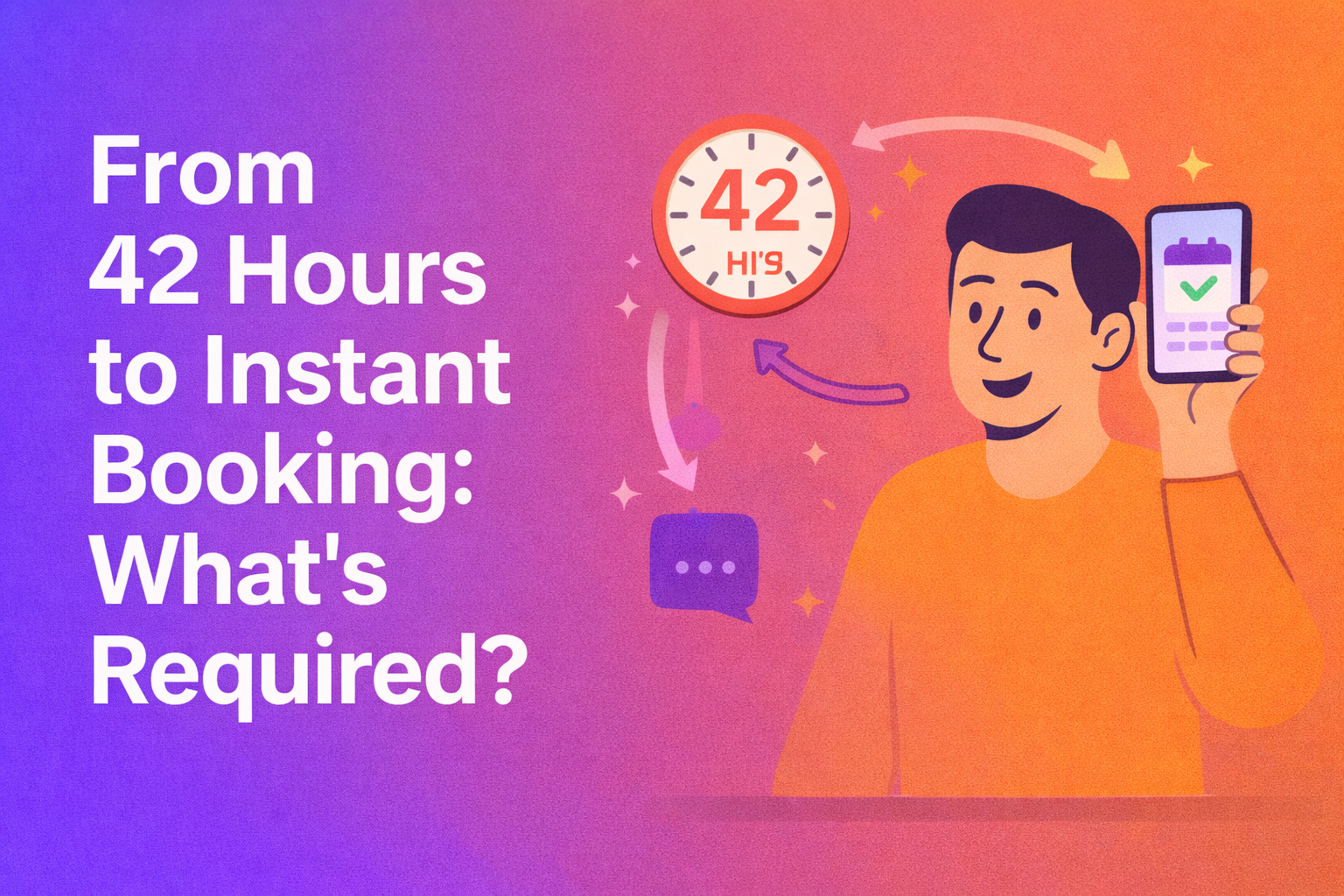Account-based marketing (ABM) sounds like the holy grail of B2B marketing — hyper-focused, personalized outreach to your dream accounts.
But just like picking a lock with a credit card, it’s trickier than it looks.
Most ABM campaigns fail, not because the strategy is flawed, but because the foundation wasn’t solid from the get-go. So, how do you create an ABM campaign that doesn’t fall apart faster than your New Year’s gym resolutions?
We’ll cover it all in this blog post.
Step 1: Get Everyone on the Same Page
One of the fastest ways to make sure your ABM campaign crashes is to skip this step. Sales and marketing alignment isn’t optional — it’s the foundation of any successful ABM strategy.
Mason Cosby nailed it when he said,
Think of ABM as a relay race. If sales and marketing don’t pass the baton smoothly, the whole team stumbles.
What You Should Do
Before diving into tools, sequences, or even audience segmentation, schedule a meeting. No, scratch that — schedule a bunch of meetings. Get everyone in the room and set clear goals. Ask questions like:
- What does success look like for both teams?
- What role will each department play?
- How will leads be handed off?
Your ABM strategy can only work if both sales and marketing are speaking the same language. Amanda Poetker, who has scaled ABM at Verifiable, emphasizes how important it is to ensure alignment before you even think about targeting accounts. Without it, you’re just throwing spaghetti at the wall.
Step 2: Start Small and Get Ready to Crawl
Mason warns about the dangers of getting too ambitious too early. “Most companies want to jump to the ‘run’ phase of ABM without crawling first,” he says. And who can blame them? The allure of scaling quickly is hard to resist. But a lot of ABM failures stem from trying to do too much at once.
What You Should Do
Start with a small list of high-value accounts. ABM isn’t about targeting thousands of accounts — it’s about getting really specific with 1,000 or even 500 accounts that are the best fit for your product. This will give you room to test, iterate, and refine your approach before expanding.
Step 3: Forget the Tech Stack — Focus on Strategy
Contrary to popular belief, ABM isn’t about investing in a shiny new tech stack. Mason gets real about this.
What You Should Do
You don’t need to break the bank on ABM tools to see success. Amanda advises companies to leverage what they already have — whether that’s Salesforce, Google Ads, or LinkedIn.
If your budget is tight, use manual methods to identify key accounts and track engagement. For example, you can manually create a target account list by cross-referencing industry directories with LinkedIn job titles. Once you’ve identified key players, you can reach them via personalized emails, direct mail, or even LinkedIn ads.
Step 4: Leverage Intent Data to Strike When the Iron is Hot
Intent data is the magic wand of ABM, giving you insight into which of your target accounts are most likely to buy and when they’re ready for outreach. Amanda Poetker’s use of intent data is a masterclass in how to do this right.
Instead of blindly reaching out to prospects, use intent data to identify when accounts are actively showing interest in her product or similar solutions, making your outreach more targeted and timely.
Use intent data to:
- Target accounts with high-intent behaviors: Prioritize those accounts for immediate outreach.
- Refine your messaging: Tailor your communication based on the content they’ve consumed.
- Continue nurturing: Engage accounts that are in the research phase with valuable resources to build trust and move them closer to conversion.
Here’s how Amanda uses intent data at Verifiable
- Third-party Intent Data:
Amanda relies on tools like 6Sense to track third-party intent. This lets her team know when target accounts are actively researching topics related to her product on external sites. For example, if a healthcare company searches for credentialing solutions, SixthSense alerts Amanda’s team, allowing them to engage proactively. - First-party Intent Data:
First-party intent data comes from the engagement of target accounts directly with her website and content. If several individuals from a single account visit multiple product pages or download white papers, Amanda knows there’s strong interest. This helps her prioritize those accounts for immediate follow-up. - Prioritizing High-Intent Accounts:
Amanda uses intent data to prioritize outreach. Accounts that show higher levels of engagement — like visiting pricing pages or engaging with product marketing materials — are flagged for the sales team. This allows them to strike at the perfect moment, engaging prospects when they’re most receptive. - Nurturing Accounts:
Amanda doesn’t just rely on intent data to push sales; she uses it to nurture accounts that are in earlier stages of their buying journey. If an account is frequently visiting educational content, her team sends them more relevant material to build trust and guide them further down the funnel.
Intent data allows you to make your ABM efforts more efficient and personalized, increasing your chances of converting high-value accounts into customers.
What to do if you don’t have the budget for expensive tools?
Mason emphasizes that you don’t need a high-end tool like 6Sense to leverage intent data effectively. For companies working with a tighter budget, here’s how you can still use intent data:
- Use Free Tools for First-Party Intent:
Mason suggests starting with free or low-cost tools like Google Analytics or HubSpot to track which accounts are visiting your website, engaging with content, or interacting with key pages. This can give you insights into potential buying intent without spending big on specialized platforms. - Manual Tracking and Segmentation:
If you don’t have advanced third-party intent data tools, manually track account engagement across various platforms. Mason recommends using basic tools like LinkedIn and Apollo to gather insights about which decision-makers within target accounts are interacting with your content. While it’s more manual, this approach is cost-effective. - Focus on High-Impact, Low-Cost Tactics:
Instead of investing heavily in paid intent data, use manual segmentation and simple tracking to identify high-intent accounts. For instance, monitor who opens your emails, interacts with your LinkedIn content, or attends your webinars, and then prioritize those accounts for personalized outreach.
Step 5: Measure, Tweak, and Repeat
Don’t wait until the end of the quarter to assess your ABM campaign’s performance. Amanda suggests monthly reviews of campaign engagement and messaging effectiveness.
If something isn’t working, tweak it. If an account isn’t responding to emails, try engaging them via LinkedIn. Flexibility is key.
What You Should Do
Regularly assess the performance of your ABM efforts using metrics such as:
- Engagement Rate: Are your target accounts interacting with your content?
- Conversion Rate: How many engaged accounts are moving to the next stage in the buyer journey?
- Pipeline Growth: Are your efforts translating into real opportunities for your sales team?
By regularly reviewing your data, you can ensure that you’re always moving in the right direction.
Step 6: Use the Right Tools — But Don’t Overcomplicate It
While you don’t need a massive tech stack to start an ABM campaign, there are some key tools that can significantly improve your efforts, especially as your strategy matures. Both Amanda and Mason emphasize that it’s not about having the most expensive software, but about using the right tools for your current needs.
Since Verifiable has a repeatable process, Amanda Poetker can afford to rely on intent data tools to help her identify which accounts are most likely to engage. Mason, on the other hand, advocates for a scrappy approach especially if you’re just starting out, to leverage cost-effective tools to maximize impact without breaking the bank.
Tools to Supercharge Your ABM Campaign
Tools Used by Amanda Poetker:
- Salesforce: This acts as the central source of truth for managing account status, lists, and deal data. If you’re serious about ABM, having a reliable CRM like Salesforce is critical to track and manage the entire lifecycle of your target accounts.
- 6Sense: This tool provides Amanda with both third-party and first-party intent data, giving her insight into when target accounts are showing signs of purchase intent. It also helps track engagement, allowing her to adjust campaign strategies in real time.
- LinkedIn Ads: For targeting specific job titles and personas within target accounts. LinkedIn is an excellent platform for running highly targeted ads that align with your ABM goals.
- HubSpot: Amanda uses HubSpot for marketing automation, nurturing leads through email campaigns and ensuring they move smoothly through the sales funnel.
- RevenueHero: A lead-routing tool that speeds up the time from when a prospect fills out a form to when they’re contacted by sales. In Amanda’s case, the time went from 20 days to 20 hours — making it a must-have for improving response time.
- Google Analytics: A staple for tracking web traffic and understanding how visitors engage with your content.
- Koala: This first-party intent provider helps Amanda’s team flag target accounts that visit the website, even if they don’t fill out a form.
Tools Mentioned by Mason:
- Apollo: A free tool Mason uses for contact enrichment, helping him identify more decision-makers within each target account. This is especially useful for a scrappy, low-budget ABM strategy.
- LinkedIn: Like Amanda, Mason leverages LinkedIn heavily for targeting the right people within key accounts.
- Email Automation Platforms: Mason emphasizes the importance of personalized email journeys, which can be easily set up with existing automation tools.
Final Thoughts: Avoiding ABM Pitfalls
Mason sums it up best when he says that ABM often fails because companies overcomplicate things. They get dazzled by tech tools and ignore the basics — clear ownership, alignment between teams, and a hyper-focused strategy
If you focus on these foundational elements and follow the steps above, you’ll be well on your way to creating an ABM campaign that doesn’t just succeed — it thrives.
Let RevenueHero help your team turn high-intent users into booked meeting without slowing down your funnel.















